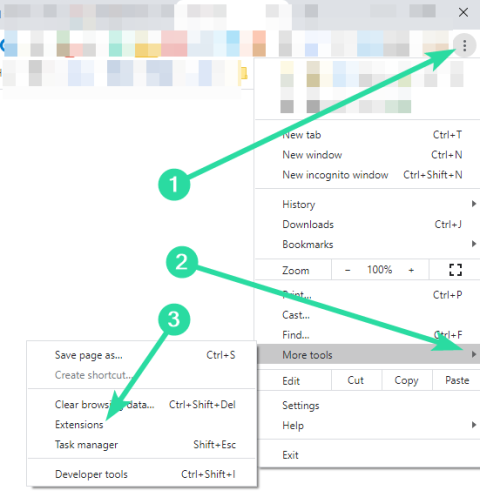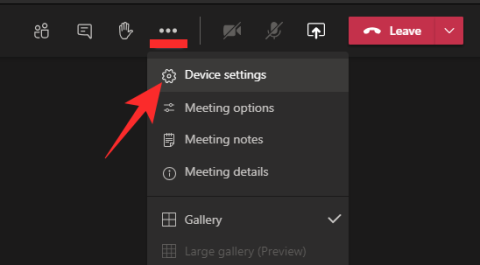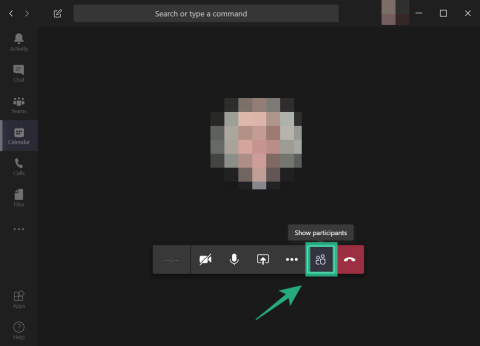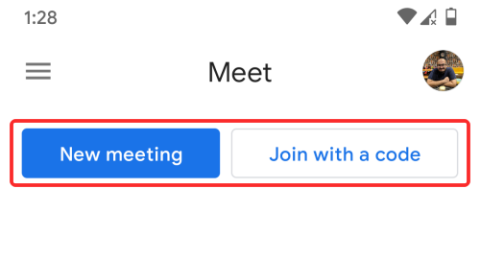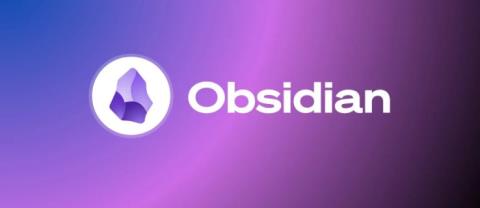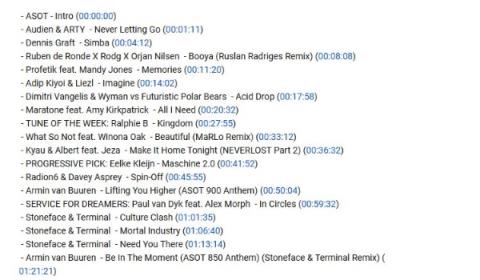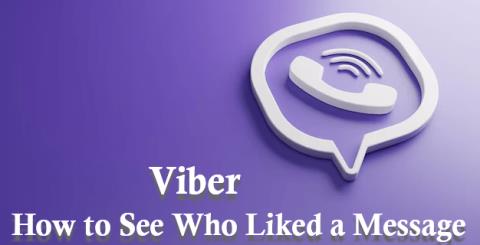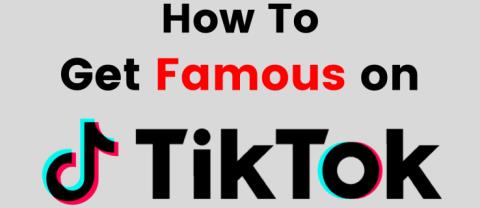Með útbreiðslu kransæðavíruss eru stofnanir um allan heim að skipta yfir í fjarvinnu með samvinnu og myndfundaverkfærum eins og Zoom , Microsoft Teams og Cisco Webex. Sérstaklega sá Zoom notendahópur þess vaxa í næstum þrefalt meiri en Teams með heildarmagn sem nam yfir 4,84 milljónum í lok mars. Og fólk skemmtir sér líka vel og notar viðbót eins og Snap Filters sem gerir þér kleift að breyta þér í kartöflu á fundi .
Hið mikla fylgi Zoom kemur aðallega í gegnum skóla og nemendur sem geta notað tólið án tímatakmarkana ( 40 mínútur fyrir aðra ókeypis reikninga) og geta gert það í gegnum vafra án þess að setja upp app. Til að keppa við myndbandsfundaþjónustuna tók Google stikla á Zoom vegna öryggisvandamála þess þegar það útskýrði hvernig nýlega endurmerkt Google Meet (fyrra, Google Hangouts Meet) býður upp á leiðir til að verjast tilraunum til að ræna.
Í eftirfarandi færslu ætlum við að útskýra hvað Zoom og Google Meet bjóða notendum sínum og hvaða þjónusta myndi virka best fyrir þig. Bæði verkfærin bjóða upp á leiðir til að tengjast vinum, fjölskyldu og vinnufélögum en við munum útskýra líkindin, muninn og hvað gerir þau bæði einstök við tilboð þeirra.
Innihald
Hvað er Zoom
Zoom er myndbandsfundatól sem gerir notendum kleift að tala við vini, fjölskyldu og samstarfsmenn á netinu, með eða án myndbands. Notendur á Zoom geta unnið saman í vinnu, tekið upp fundi og deilt skjáum sín á milli. Þjónustan býður einnig upp á háskerpu mynd- og hljóðsímtöl á öllum helstu kerfum bæði á skjáborði og farsímum.
Helstu eiginleikar Zoom eru ma einn á einn fundir, hópmyndafundir, skjádeiling, endurteknir fundir og bakgrunnsbreyting. Hins vegar er besti eiginleiki þess í formi auðvelds aðgangs sem er sú staðreynd að það er fyrst og fremst hægt að nota það í gegnum vafra tækisins þíns.
Hvað er Google Meet
Google Meet, áður þekkt sem Hangouts Meet, er myndbandsfundahugbúnaður fyrir fyrirtæki Mountain View sem er líkt með eigin Hangouts þjónustu en kemur með viðbótareiginleikum eins og stærri hópsímtöl og streymi í beinni, rauntíma skjátexta, deilingu skjás, slökkt á símtölum og slökkva á myndskeiði meðan á símtali stendur.
Til að taka þátt í fundi innan Google Meet geta skipuleggjendur búið til tengla og deilt þeim með meðlimum til að vernda fundinn fyrir flugræningjum með því að nota 25 stafa fundarauðkenni, takmarka utanaðkomandi meðlimi sem ekki hafa boð um dagatal og leyfa skipuleggjendum að taka við nýjum félagsmönnum í gegnum beiðnir.
Zoom Free vs Google Meet Free
Þó að bæði samstarfsverkfærin bjóði upp á umfangsmikið sett af þjónustu fyrir greidda viðskiptavini sína, þá er það Zoom sem hýsir grunnáætlun sína ókeypis. Þegar þú hefur stillt þig upp á ókeypis reikning á Zoom geturðu fengið aðgang að ótakmörkuðum fundum, þó að fundartíminn sé takmarkaður við 40 mínútur fyrir hverja lotu. Ókeypis áætlunin styður allt að 100 þátttakendur á fundi, endalausa einstaklingsfundi, notkun sýndarbakgrunns, réttu upp höndina til að tjá sig á fundum, skjádeilingu, upptöku á fundi og þagga meðlimi.

Þangað til 29. apríl 2020 var Google Meet ekki með ókeypis áskrift þar sem það var hluti af G Suite áskrift Google og kostaði $6 á mánuði fyrir grunnáætlunina. Nú, viku eftir að opinbera tilkynningin var birt - 6. maí 2020 - hefur Mountain View risinn byrjað að bjóða upp á Google Meet þjónustu sína fyrir alla með Google reikning.
Ókeypis notendur munu geta haldið myndbandsfundi í ótakmarkaðan tíma, með allt að 100 meðlimum til 30. september, en eftir það verða fundir takmarkaðir við 60 mínútur fyrir ókeypis notendur. Notendur á ókeypis áætluninni munu einnig geta fengið aðgang að háþróaðri eiginleikum Meet og G Suite Essentials til 30. september.
Zoom Pro vs Google Meet: Greiddar áætlanir og eiginleikar
| Þjónusta |
Áætlun |
Verð |
Eiginleikar |
|
Aðdráttur
|
Zoom Pro |
$14,99 |
Allt að 100 þátttakendur, sólarhrings hópfundir, gerð persónuleg fundarauðkenni, upptökur á staðnum eða í skýi
|
| Zoom viðskipti |
$19,99 |
Allt að 300 þátttakendur, Zoom Pro eiginleikar, vörumerkjafundur með vörumerki fyrirtækisins, hégómavefslóðir, fundaruppskrift, sérstakur símastuðningur
|
| Zoom Enterprise |
$19,99 |
Allt að 500 þátttakendur, allir viðskiptaeiginleikar, ótakmarkað skýjageymsla, sérstakur árangursstjóri viðskiptavina, umsagnir stjórnenda, afsláttur af vefnámskeiðum og aðdráttarherbergjum
|
|
Google Meet
|
G Suite Basic |
$6 |
Allt að 100 þátttakendur, 30GB Drive geymslupláss, Samnýtt dagatöl, |
| G Suite Business |
$12 |
Allt að 150 þátttakendur í hverju símtali, Ótakmörkuð skýgeymsla í gegnum Google Drive, Samnýtt dagatöl
|
| G Suite Enterprise |
$25 |
Allt að 250 þátttakendur í hverju símtali, Ótakmörkuð skýjageymsla í gegnum Google Drive, Samnýtt dagatöl, upptaka fundi, streymi í beinni
|
Þó að ódýrasta áætlunin fyrir Google Meet sé ódýrari en Zoom, þá er óhætt að segja að eiginleikarnir sem hún býður upp á séu þeir sömu og Zoom gerir á ókeypis áætluninni en án tímatakmarkana. Google Meet með G Suite Basic hentar litlum fyrirtækjum best þar sem það er verulega hagkvæmara en Zoom Pro.
Hins vegar, fyrir stærri stofnanir, fara Zoom Business og Zoom Enterprise með vinninginn þar sem þau styðja allt að 300 og 500 þátttakendur í sömu röð, meira en það sem Meet with a G Suite Enterprise áskrift býður upp á, sem nær 250 meðlimum að hámarki.
Zoom vs Google Meet: Menntun
Til að hjálpa skólum og nemendum á meðan á heimsfaraldri COVID-19 stendur hefur Zoom aflétt 40 mínútna fundartakmörkunum á ókeypis grunnreikningum fyrir skóla í Bandaríkjunum, Belgíu, Tékklandi, Grikklandi, Noregi, Portúgal, Sviss, UAE, Kanada, Þýskalandi. , Bretlandi, Ísrael, Ástralíu, Indlandi og Nýja Sjálandi. Logitech, vélbúnaðarfélagi fyrirtækisins, býður upp á ókeypis búnaðarbúnta fyrir grunnskólakennara.
Zoom hefur einnig verið í samstarfi við Clever til að gera Zoom aðgengilegan fyrir svæði sem upplifa skólalokanir og Zoom reikningar sem settir eru upp í gegnum Clever munu innihalda ótakmarkaða kennarareikninga, engin tímatakmörk á sýndartíma, einskráning í gegnum Clever og stuðning fyrir PC, Mac, Chromebook, Android og iOS.
Google býður upp á úrvals myndfundaeiginleika Google Meet kennara og upplýsingatæknistjórnenda ókeypis til 30. september 2020. Skólar sem búa sig undir lokun skóla munu nú geta fengið aðgang (í gegnum Google Meet) eiginleika eins og stærri fundi (allt að 250 þátttakendur í hverju símtali), streymi í beinni fyrir allt að 100.000 áhorfendur og getu til að taka upp fundi og vista þá á Google Drive.
Uppfærsla [3. júlí 2020] : Google mun bæta við fullt af nýjum eiginleikum fyrir kennara á Meet á „komandi mánuðum“. Þessar breytingar munu fela í sér sýndartöflu, loka fundi fyrir alla, loka á óþekkta fundarmenn, leyfa nemendum að banka áður en þeir fara inn, spurninga og svara fundi, handauppréttingu og fleira.
Stuðningur á vettvangi
Hægt er að halda fundi bæði á Google Meet og Zoom á tölvum sem og farsímum. Báðar þjónusturnar bjóða upp á farsímaforrit á iOS og Android. Hins vegar er það Zoom sem býður upp á öpp bæði á Windows og Mac, eitthvað sem Google gerir ekki með Meet. Notendur Meet geta aðeins notað þjónustuna á tölvu með vafra.
Aðdráttur : Android, iOS, Windows, Mac, Vefur
Google Meet : Android, iOS, vefur
Uppfærsla [20. ágúst 2020] : Zoom hefur tilkynnt að notendur muni brátt geta notað Zoom heima á snjallskjánum sínum. Fyrirtækið hefur opinberað að þjónustan verði fljótlega fáanleg á Amazon Echo Show, Facebook Portal og Google Nest Hub Max. Gáttin yrði sú fyrsta til að fá hana (í september) og síðan hin tækin tvö í lok haustsins 2020. Með slíkri virkni muntu fljótlega geta komist inn á fundi með því að ýta á hnapp eða með því að smella á hnappinn. með raddskipunum.
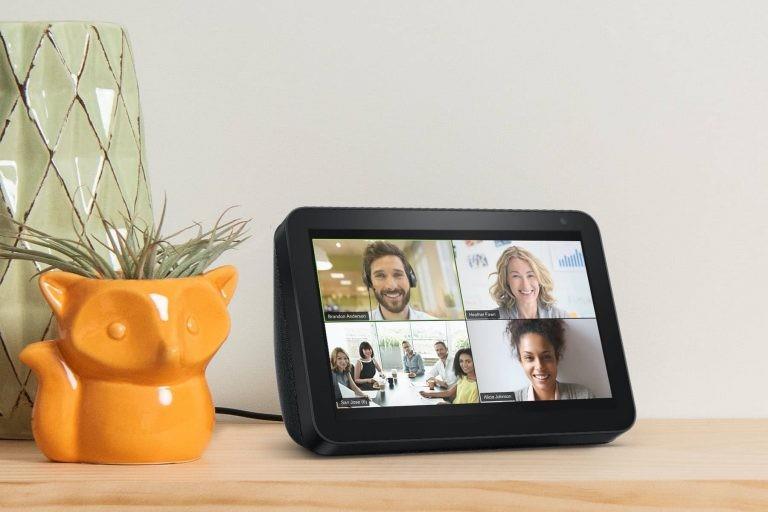
Samþætting
Annað sem ákvarðar hver af þessum tveimur þjónustum virkar best fyrir þig er hvernig hún samþættist annarri þjónustu. Zoom býður upp á samþættingu við Google öpp og þjónustu eins og Google Drive , Google Calendar auk stuðning við Facebook Workplace, Skype for Business og Microsoft Outlook.
Aftur á móti býður Google Meet upp á óaðfinnanlegan samhæfni við aðra þjónustu Google eins og dagatal, Gmail , Drive, Docs, Sheets, Slides, Keep og fleira þar sem það er undir miklu stærri G Suite áskrift. Myndsímtalatólið styður einnig fundi með öðrum teymum sem nota Skype for Business og önnur kerfi sem styðja SIP og H.323 staðla. Google hefur einnig opinberað (17. apríl) að notendur munu fljótlega geta tekið við myndsímtölum beint í gegnum Gmail.
Hvor þeirra er notendavænni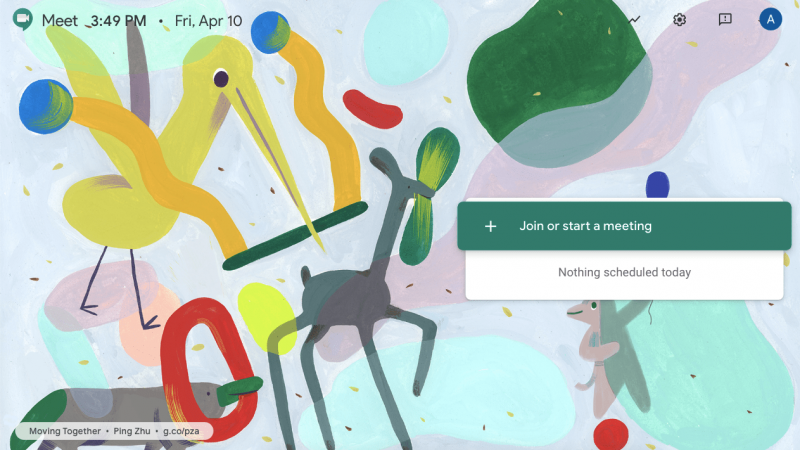
Heimaskjár á Google Meet
Google Meet býður upp á frekar einfalt notendaviðmót með eina möguleikanum sem þú getur séð á mælaborðinu sem fær þig til að byrja eða taka þátt í fundi. Ef þú ert ekki sá sem býrð til fund færðu boð í tölvupósti og allir á fundinum verða settir upp á skjáinn sem töflu með framsögumanni auðkenndan í miðjunni. Ef þú ert með forstilltan fund eða hefur verið boðið að taka þátt í þeim mun hann birtast á heimaskjánum fyrir tiltekna dagsetningu. Þegar þú ert á fundi geturðu einnig valið á milli mismunandi útlitsvalkosta til að skoða myndskeið mismunandi þátttakenda. 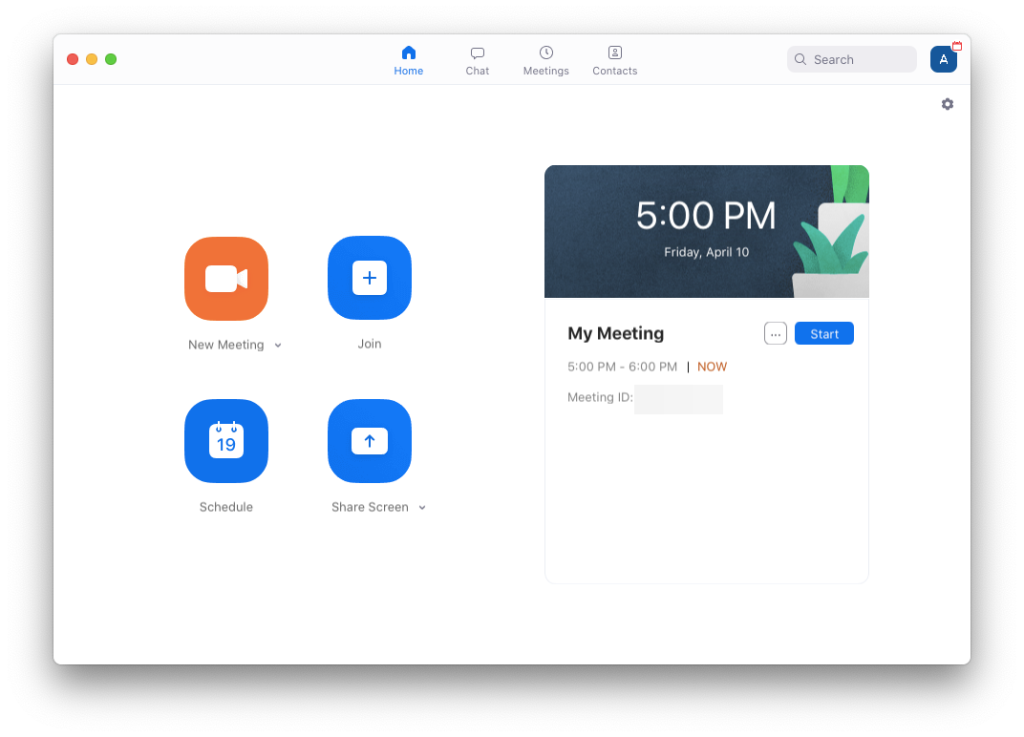
Heimaskjár á Zoom
Ef þú taldir viðmót Google Meet snyrtilegt, þá er Zoom appið hreint og gerir það auðveldara að rata. Innan heimaskjásins geturðu hafið fund, tekið þátt í einum fundi, tímasett einn fyrir síðar eða deilt skjánum þínum með öðrum. Þó að heimaskjár hans bjóði upp á hreint útlit er ekki hægt að segja það sama þegar þú byrjar fund á Zoom. Í björtu hliðinni býður Zoom upp á eiginleika sem eru ekki aðeins fáanlegir á Google Meet heldur einnig á öðrum myndfunda- og samstarfsþjónustum. Fundir hefjast án myndbands og á meðan á fundinum stendur geturðu deilt skjánum, slökkt á öðrum/alla þátttakendum og líka endað fundi fyrir alla en ekki bara sjálfan þig.
Getur þú breytt bakgrunni fyrir myndsímtöl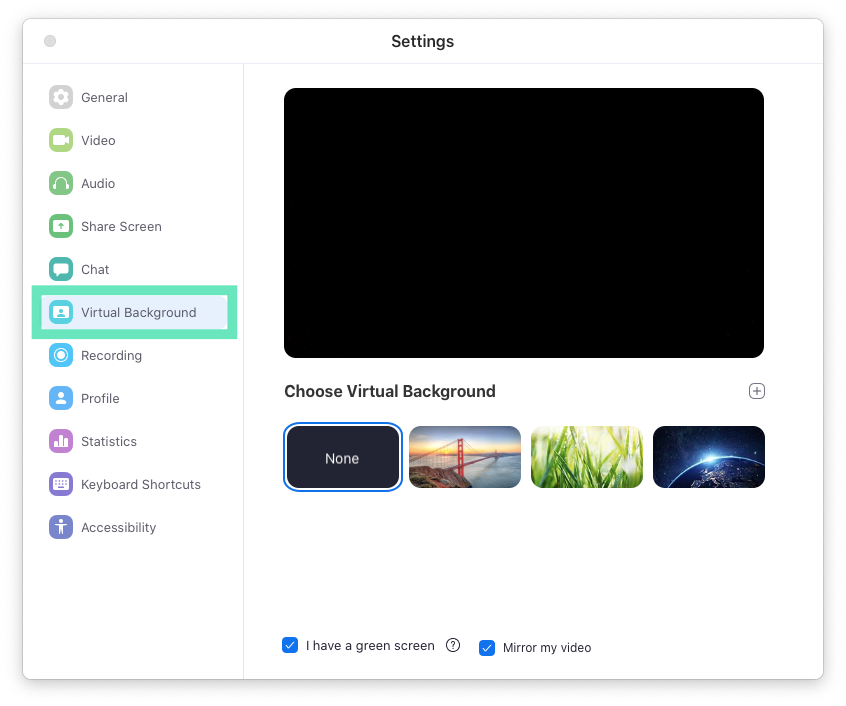
Aðdráttur gerir þér kleift að breyta bakgrunni myndsímtalsins í mynd að eigin vali. Með örfáum smellum geturðu stillt mynd eða myndband sem bakgrunn á fundi svo að aðrir meðlimir geti ekki séð subbulega hluti í umhverfi þínu. Ef þú hefur valið óvirkt, gerir Zoom þér samt sem áður kleift að bæta við sýndarbakgrunni þegar fundur er í gangi. Þó að fyrirtækið mæli með því að nota grænan skjá og viðeigandi vefmyndavél til að ná sem bestum árangri, mun aðgerðin virka jafnvel án þeirra.
Unlike on Zoom, there’s no option to switch backgrounds on Google Meet. However, the Mountain View company is looking for ways to add a background blur feature to its mobile app, something other collaboration tools like Microsoft Teams and Skype offer as well. Google appears to be testing the option to blur your background automatically in Meet.
At the time of writing, the only way you can change the background or bring yourself to pop during a video call on Meet is by installing and using Snap Camera on your computer.
Update [July 3, 2020]: In the “coming months“, you will be able to change your background or blur it and Google will provide users with a handful of options and the ability to customize it yourself. As an added bonus, the company will also give meeting administrators an option to disable background change or blur if they feel like it.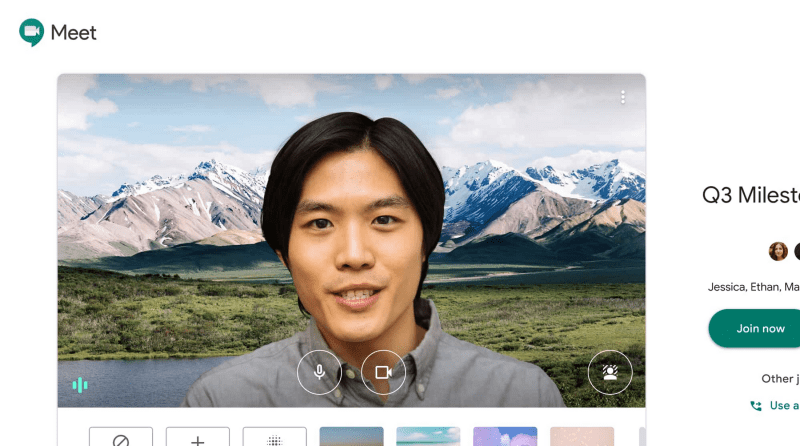
If you take a look at this Google support page, you will notice that the ‘Background blur and replace’ feature is currently in development on both desktop and mobile platforms.
What’s best for larger group meetings
As discussed above, Zoom offers support for up to 100 participants for free and up to 500 participants on a paid plan through its service. That’s not it, Enterprise Plus users on Zoom can host up to 1000 members during a video conference, something Google Meet doesn’t offer on any of its paid subscriptions.
While Google offers the functionality of viewing up to 16 participants at a given time, Zoom already provides users with the ability to view 49 participants. If you have more than 49 participants connected during a meeting, Zoom lets you switch between screens for easy viewing.
Update [July 3, 2020]: Support for tile view of up to 49 participants is on its way to the consumer version of Google Meet, according to The Verge.
Can you split your large groups in to small ones?
If your organization conducts meetings with large groups of people, you may want to break the primary meeting group into multiple subgroups. The feature is mainly called Breakout rooms and is readily available on Zoom which lets you split a meeting to up to 50 separate sessions. The meeting host will have full control over assigning participants to different subgroups and they will also be able to jump from one meeting to another.
While Zoom already has this feature, Breakout Rooms is currently “in development” for Google Meet as is mentioned on this Google support page. The feature’s description confirms that Breakout Rooms on Meet will let you split large meetings into smaller forums so that participants can make parallel progress from within the same meeting.
What’s best for video calls
While Zoom could give you an advantage in terms of calling larger groups of people, Google’s Meet service handles the basics of conducting a meeting better. You can easily invite colleagues to join you by accessing your Gmail contact list, set reminders and add a meeting to members’ calendars. Another tool that allows for faster video calling is the ability to reuse the same meeting ID that can be used over and over again.
Zoom not only offers the ability to call more participants on video but also shows video feeds of up to 49 participants on a single screen, something no other conferencing tool out there can go against. Meetings on Google Meet only show up to 16 participants at a given time which is a letdown if you’re a large organization and if you want to see as many people as you can during a live meeting session.
Update [July 3, 2020]: According to a report by The Verge, Google Meet is soon going to roll out support for a tile view of up to 49 participants to its consumer version.
Can you use Google Assistant to join, end, and control a meeting?
So you can talk to your colleagues and friends on any device you own, that’s nice! But what if you can start a meeting by just using your voice? That will be great right? Google is doing just that and is currently allowing voice control for Google Meet hardware, making it easy to join and end a meeting.
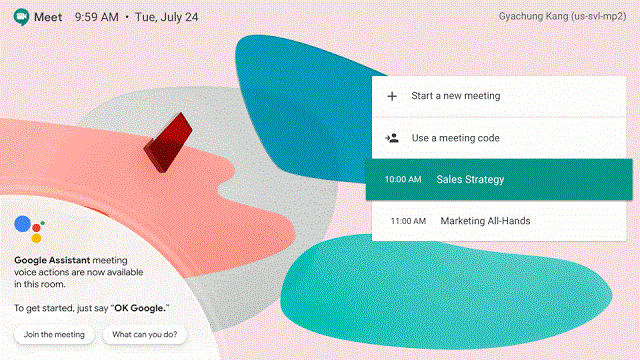
At the time of writing (August 19), the feature is in beta and is available for those of you on a licensed G Suite account who also use ASUS and Logitech meeting room kits. Once enabled, you can use the “Hey Google” command to join or exit a meeting, dial a phone number, and turn on spoken feedback. If this feature goes mainstream, we can also expect Google to roll out the ability to do the same on phones and computers.
Zoom, on the other hand, doesn’t offer such kind of integration.
Which service offers better low-light video
Zoom might be known for its extensive feature set but Google offers some features that are exclusive to its own services including one really good feature on Google Meet. The service has added (Apr 22) a new low-light mode for video calling to help you in situations where there is little to no lighting in a room.
When Meet detects that you’re present in a dimly-lit room, the video calling service will intelligently adapt to the lighting situation and enhance your video so that others can see you clearly. The switch to low-light mode is done automatically, meaning you do not have to manually press a button to make use of the feature. Low-light mode is already available inside the Google Meet app on iOS and Android and the company says it will be available to web users in the future.
Unlike Meet, Zoom doesn’t come with low-light video mode to enhance your feed when in dimly-lit conditions. You will have to make do by installing LED lights in front of your webcam or count on natural lighting to brighten up your face (literally!) during a meeting.
Zoom vs Google Meet: Which service limits background distraction
While Zoom already lets you change your background virtually to prevent other participants from getting distracted from what’s happening around you, it would be even more helpful if others in a meeting can hear you better after the background noises are removed.
Google Meet can intelligently remove background noises if you’re in a public place and also reduce the sound from the keystrokes of your keyboard. The feature is currently available for G Suite Enterprise users on the web and will be gradually seeded to the Meet app on mobile phones.
Similar to Meet, Zoom also has a background noise cancellation feature of its own. The service can block both persistent and intermittent noises, meaning it can prevent the audio from including sounds of fans and audio conditioners as well as keyboard sounds, doors closing, tapping, and chair movement. Zoom also lets you control how aggressive you want cancellation to work for you during meetings or switch it off if you don’t want either of them.
What’s best for collaboration
Zoom is regarded as the most popular video conferencing service and it even includes collaboration tools like screen sharing, slide presentations, breakout rooms, file sharing, multiple hosts, and mute participants. Zoom also comes with a whiteboard that can be used for inviting others to view and annotate; and the ability to conduct polls during a meeting session.
Since it comes along with a G Suite subscription, Meet lets you share images, videos, and documents, but you can also share those files that are saved to your Google Drive. Both services support screen sharing but Meet offers real-time demonstrations.
Update [August 19, 2020]: Google is expected to roll out a slew of collaborative features to Meet including the ability to split large meetings into smaller groups with breakout rooms, take real-time polls, conduct Q&A session, take attendance of participants who’re present in the meeting, and more. The company is also giving users the functionality of a whiteboard on Google Meet with the help of Jamboard.
In its support page, Google has claimed that Polling and Q&A features are “in development”. The feature description for both indicates that these would help engage participants and livestream viewers with polling and Q&A capabilities.
Which service can you use for sharing your screen more securely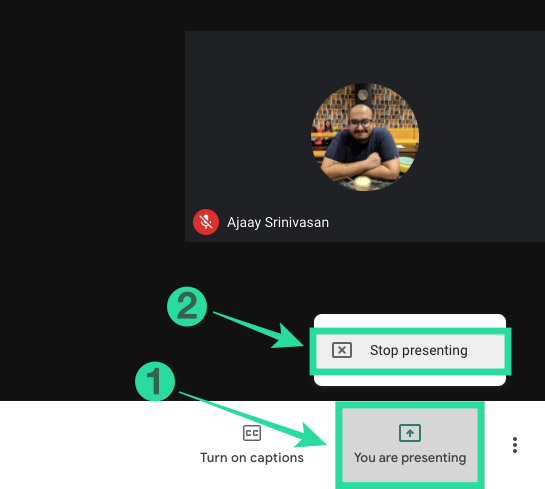
Although screen-sharing is available on both Zoom and Google Meet, the latter provides a more secure way of sharing your screen. For instance, you’re in a meeting with your clients and you’re sharing contents of your screen to them and unfortunately for you, your screen shows more content than you wanted to share with them.
That’s where Google Meet’s ‘Present a Chrome tab’ comes to the rescue. When you share a single Google Chrome tab to your participants on Meet, only the contents of the selected Chrome tab will be visible to them, keeping the rest of the information more secure. At the time of writing, Zoom doesn’t feature a similar option, meaning you should stick to Google Meet if presenting your screen is something you regularly do in a meeting.
Can participants raise their hands to speak?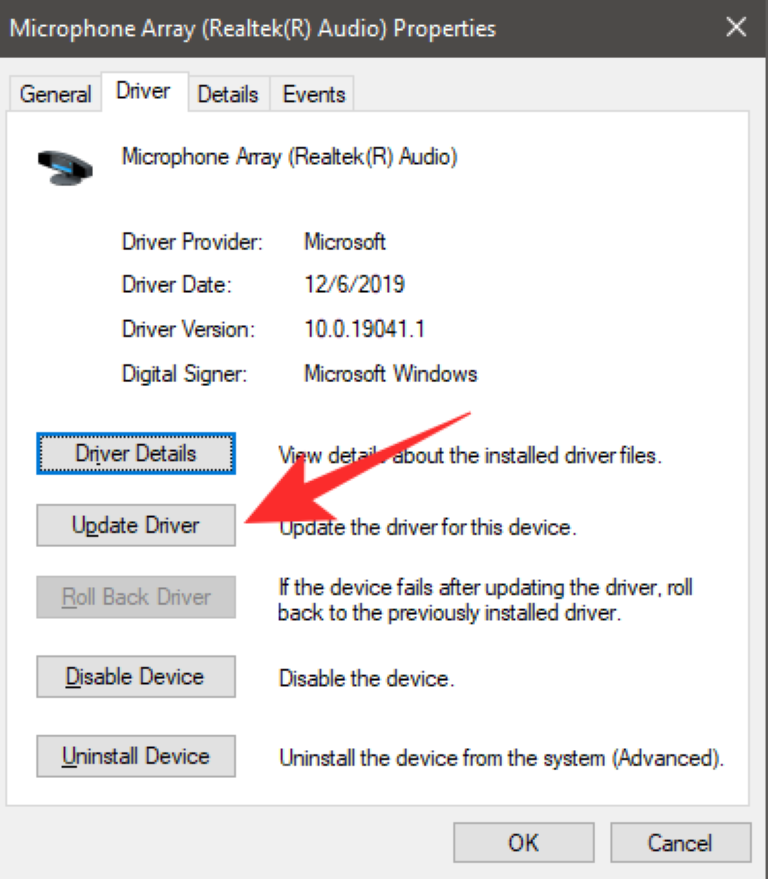
The biggest highlight of Zoom in terms of collaboration is the ‘Raise Hand’ feature which allows attendees to raise their hand to indicate that they would like to speak or if they have a question so that the hosts can unmute them. If you’re a host or a panelist, you will be notified when an attendee raises their hand and wants to give their input.
Google Meet, on the other hand, doesn’t offer a feature that matches this.
Update [July 3, 2020]: Google is expected to roll out a Hand raising feature for its Meet users in a future release. The feature is intended to increase participation in meetings where the number of attendees is large in numbers, giving everyone a chance to speak upon raising their hand.
Can you transfer your meeting to a phone?
When joining a video meeting on your computer Google Meet can let you use your phone to listen and speak. This means you can use a phone for audio while still using your computer’s camera and web browser for video during a video conference on Google Meet.
The feature is currently only available in the U.S. and Canada and can be accessed after you join a meeting under the ‘Join and use a phone for audio’ label. Google is also developing a ‘Dial-out’ feature for being able to call an international phone number from a Meet video call.
Zoom doesn’t offer an option to transfer your meeting between devices.
Which service can save group chats during a meeting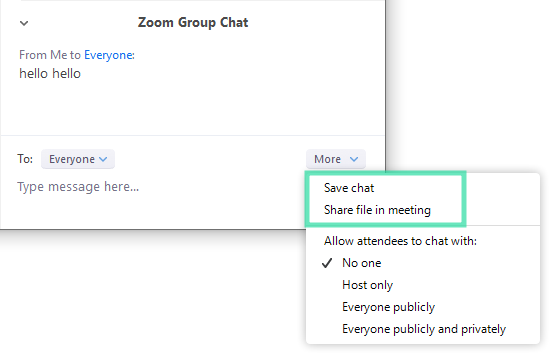
Google Meet’s support page clearly mentions that you can only see the chat messages exchanged when you are in the meeting and all messages disappear when you leave the meeting. That’s not the case with Zoom as the service offers the ability to automatically or manually save in-meeting chats. You can save the chat in TXT format and also send it to the chat in addition to storing it on the cloud.
Which app lets you easily search for messages, files, and contacts?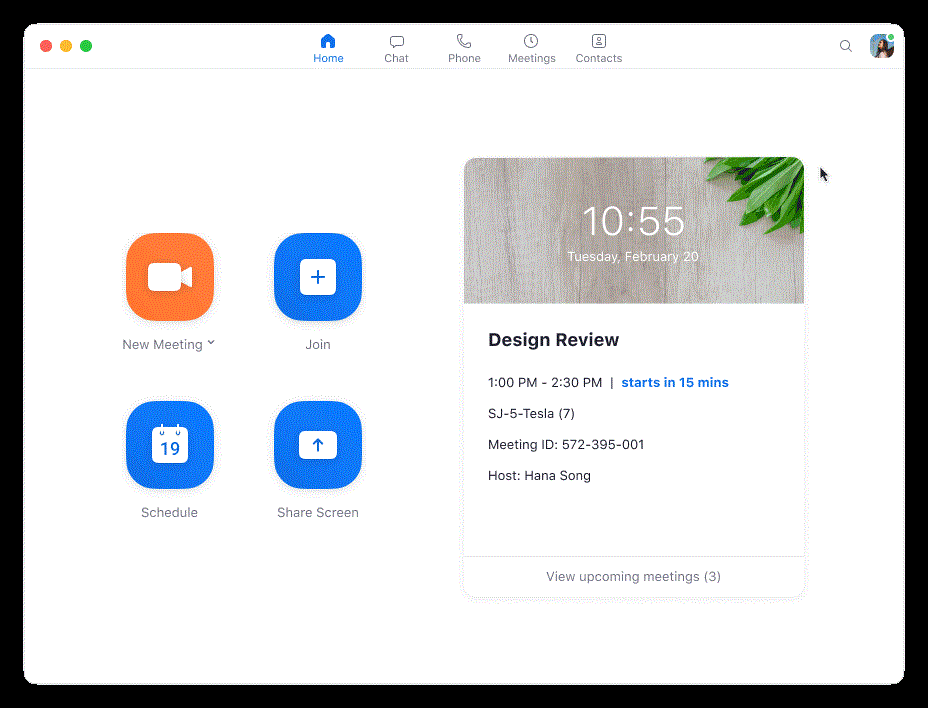
Among any video conferencing tools available in the market, Zoom has established itself as the complete package and rightly so. In a recent update to its desktop client, Zoom has made it easier for you to search for things like contacts, messages, files, or chat channels with ease. You can do that by clicking on the Search tool at the top right and sort through the results across different categories.
Google Meet currently doesn’t have such a tool available on its interface but keeping in mind that Meet is another product from the search giant, we could expect it to arrive later in the future.
Do either of them offer In-Conference Private Chat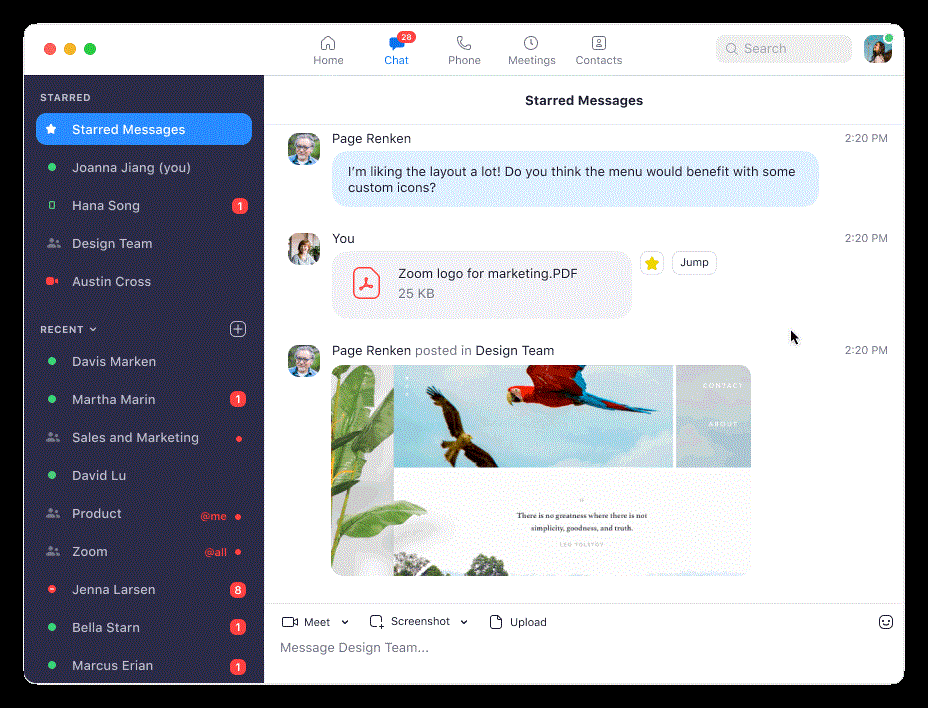
During a meeting, Google Meet allows you to send messages to the other video call guests. While Zoom can do that too, it also lets you send a private message to an individual user during a session. You can do that using the ‘Jump’ button adjacent to the contact’s message to start a private conversation.
This message won’t be visible to other members of the group except for the participant you’re tatting to. Additionally, if you’re a host, you can choose who the participants can chat with or to disable chat entirely.
Unlike Zoom, Meet doesn’t natively offer an In-Conference Private Chat feature but you can easily do that using Google’s own Hangouts service and have 1:1 text-based conversations with another participant there.
Can organizers end meetings once and for all?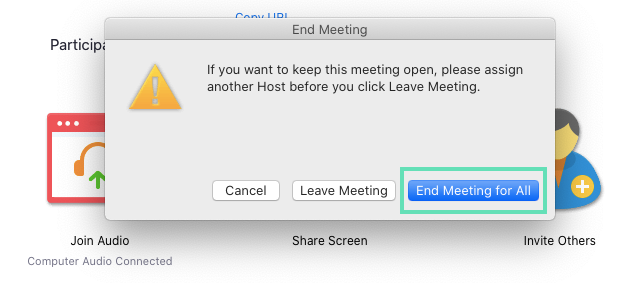
A problem that users often face during group video calling is that meetings don’t end until the last user gets off. On Zoom, organizers can choose to end the meeting for all participants when hanging up on the call.
You can also assign host controls to another user, allowing the meeting to continue without you. This host can then control the meeting and decide to end it like an organizer.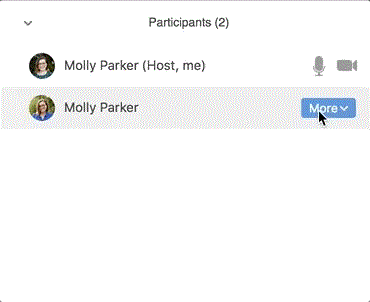
Meanwhile, on Google Meet, you cannot permanently end a Google Meet. When an organizer ends a meeting, other members will be able to use the code or meeting name to re-enter the session without the supervision of the host. This means, even if you’re the person who set up the video call, leaving the call doesn’t mean that you’re ending the call for everyone in the meeting.
Update [July 3, 2020]: In addition to feature updates, Google is also rolling out additional controls for hosts one of which will include the ability to end the meeting for all participants if you’re the moderator of the meeting.
Which one of the two protect your meetings better
In an age where your data is as valuable as currency, technology companies from around the world are promising that they’d store your data more securely. While Google is known to store an enormous amount of data on every single one of us to push more ads, the company has built its tool around protecting users’ data from attackers.
Zoom could be a widely used video calling tool but funnily enough, its user base is either unaware of its security issues or is choosing to avoid them. Zoom’s security practices have drawn a lot of attention in the past few months. The service was first caught sending user analytics data to Facebook, then a bug was found to take control of a user’s microphone or webcam but the biggest of its vulnerabilities was when hackers broke into private meetings and harass attendees.
As of May 30, Zoom has made it mandatory that users are updated to Zoom 5.0 to join meetings, meaning meetings on Zoom are now protected with AES 256-bit GCM encryption. The service also added a slew of other security features like watermarking, Waiting Room, Lock Meeting, Complex Meeting IDs, Meeting Registration, encrypted recordings with password protection, secure contact sharing, and more.
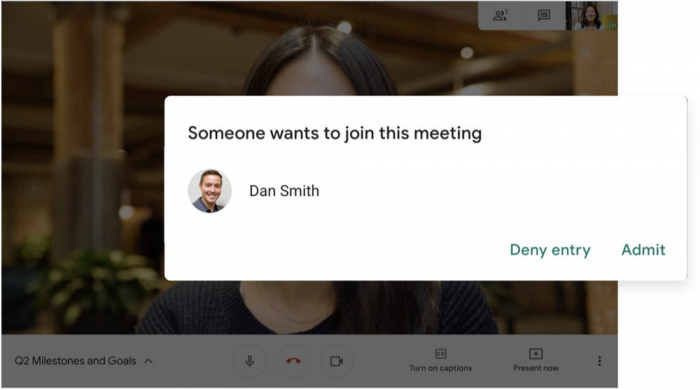
In a recent post, Google assured that Meet employs an array of counter-abuse protections to keep video conferences and meetings safe. The service uses 25-character Meeting IDs, limits external participants from joining a meeting 15 minutes in advance, and also restricts those who don’t have calendar invites.
Another important security measure is that participants cannot rejoin meetings after the final participant has left, meaning members cannot rejoin if the organizer has left the meeting. In terms of data protection, Meet supports 2-Step Verification options and encryption standards like Datagram Transport Layer Security (DTLS) and Secure Real-time Transport Protocol (SRTP).
Update [July 3, 2020]: According to 9to5Google, Google will be rolling out a “Knock” feature where participants will need to knock on a locked meeting before a moderator lets them in. With this functionality, attendees will no longer to able to knock once they’re been ousted from a meeting and the knock option will disappear if the host rejects the participant’s request more than once.
Another upcoming addition to Meet is that Google will, by default, block anonymous attendees from entering an Education meeting.
Why should you use Google Meet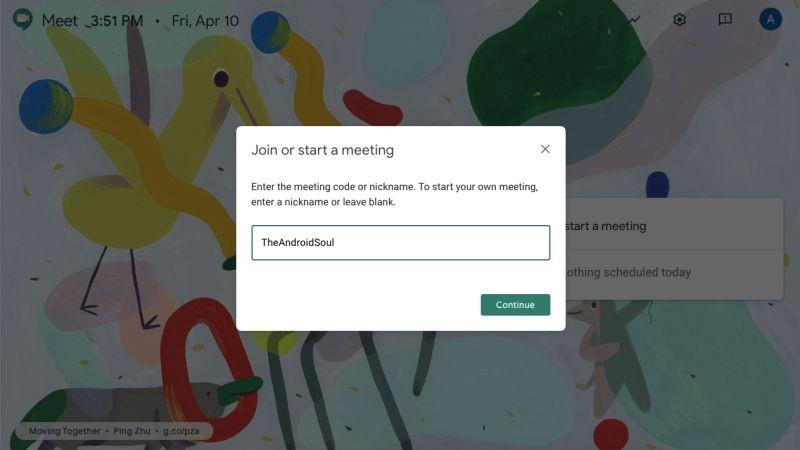
- Integration with other Google services
- Easier to set up for first-time users
- Allows reuse of same meeting ID for meetings
- Presentation tools during meetings
- Grid view with up to 16 participants at a given time
- Background blur when video conferencing [Upcoming]
- Ability to filter background noises like keyboard clicks, door slams
- Low light video calling
- Accept calls directly from Gmail
- Ability to present a single Chrome tab instead of your entire screen
- Transfer your Meet call to your phone
- Change screen layout during video conferencing
- Better security and support for latest encryption standards [Not to be taken lightly]
- Doesn’t require downloading an app
- Take attendance [Upcoming]
- Breakout rooms [Upcoming]
- Take polls and conduct Q&A sessions [Upcoming]
- Additional host controls for joining, muting and presenting [Upcoming]
- “Knock” feature for participants to enter meeting [Upcoming]
Why should you use Zoom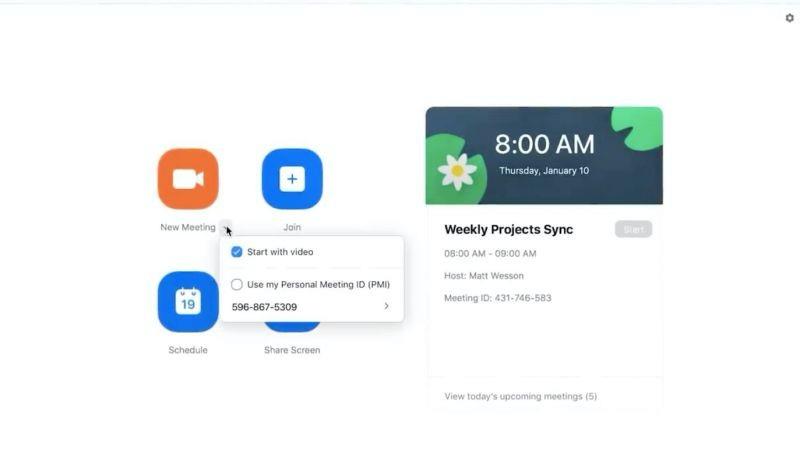
- Smaller organizations can use free plan
- Support for up to 500 participants (up to 1000 with Enterprise Plus plan)
- Wider platform support – Web, Android, iOS, Mac, Windows
- Change video background
- Integration with third-party collaboration services
- Local and cloud recording
- Prevent background noises
- Organizers can end meeting for everyone
- Allows participants to raise a hand to get the chance to speak
- Chat privately during a meeting
- Save group chats
- Mute all participants in the group
- Audio/video watermarking
- Waiting room for participants who’re yet to be added to a meeting
- Meeting authentication and registration
The bottom line
In terms of features and just how easy it is to start using it from scratch, Zoom is by far the better option overall. It has a free plan that allows meetings of up to 100 participants, changing video backgrounds, featuring Raise hand, end meetings for everyone, mute all participants in a meeting, and saving your chats locally and on the cloud.
Its paid plans offer support for larger group meetings, unlimited meeting duration, and dedicated customer support. Zoom has even upped its security measures to include Meeting Authentication, locking, waiting room, and complex IDs with Zoom 5.0. If you’re someone who cares about at least one of the features that Zoom offers, then rest assured that Google Meet is not for you.
However, if what you’re looking for revolves around file sharing and seamless integration with other services, then Google Meet is something you would want to look out to. For repetitive sessions of the same participants, one can use the same meeting ID to join the meeting faster and the service also lets you customize the video layout on the call screen. You also do not require to install yet another app on your PC to access Google Meet and the service lets you take a call over the phone and is the only service it at the moment.
The service also uses AI to cancel background noises and brighten your video feed in low-light cognitions. Perhaps the biggest reason you’d want to use Google Meet will be security as Google promises protection against hijacking and support for the latest encryption standards.
If you’re still undecided about which one to use, we would suggest you try both of them. Zoom’s free plan can be activated using an email address while Google Meet can be used for free by anyone with a Google account. Only if you use it, you’d be able to find out which one of the two works best for you.
Did this help?
Let us know if you need to know anything else regarding choosing between Zoom and Google Meet. Use the comments box below to get in touch with us, or the contact us page. We will try our best to get back to you with the info you seek.
Which video conferencing tool between Zoom and Google Meet are you likely to use to talk to your friends, family, and co-workers? Which one do you think works best for you? Let us know in the comments below.
